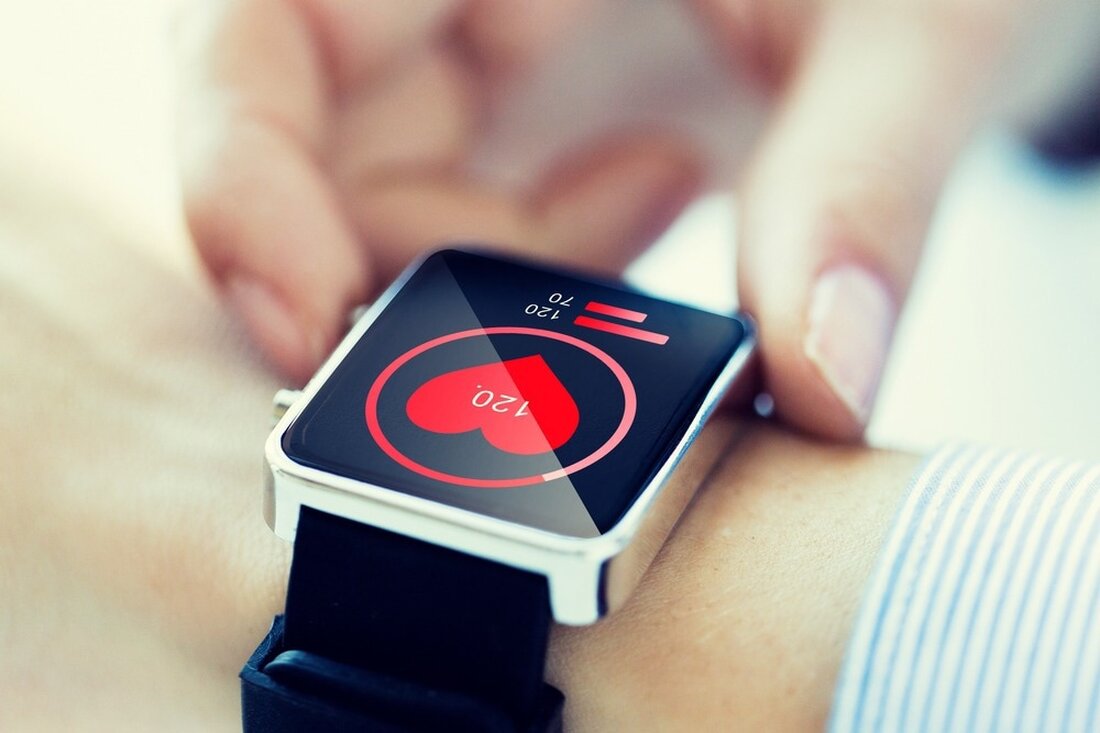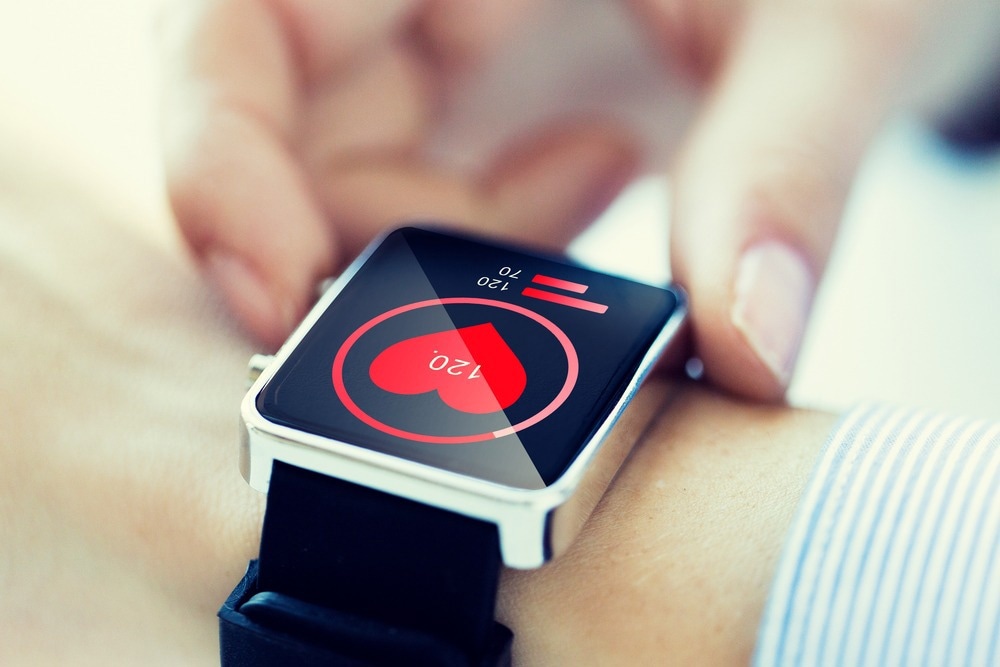Die Verwendung von tragbaren Gesundheitsgeräten durch Patienten mit Herz-Kreislauf-Erkrankungen und Patienten mit erhöhtem Risiko für Herz-Kreislauf-Erkrankungen in den USA
*Wichtiger Hinweis: Aussagen und Schlussfolgerungen von Studien, die auf wissenschaftlichen Tagungen der American Heart Association präsentiert werden, sind ausschließlich die der Studienautoren und spiegeln nicht unbedingt die Politik oder Position der Association wider. Der Verband gibt keine Zusicherungen oder Garantien hinsichtlich ihrer Genauigkeit oder Zuverlässigkeit. Abstracts, die auf den wissenschaftlichen Tagungen der Vereinigung präsentiert werden, werden nicht von Experten begutachtet, sondern von unabhängigen Gutachtergremien kuratiert und auf der Grundlage des Potenzials berücksichtigt, die Vielfalt der auf der Tagung diskutierten wissenschaftlichen Themen und Ansichten zu erweitern. Die Ergebnisse gelten als vorläufig, bis sie als vollständiges Manuskript in einer von Experten begutachteten …

Die Verwendung von tragbaren Gesundheitsgeräten durch Patienten mit Herz-Kreislauf-Erkrankungen und Patienten mit erhöhtem Risiko für Herz-Kreislauf-Erkrankungen in den USA
*Wichtiger Hinweis: Aussagen und Schlussfolgerungen von Studien, die auf wissenschaftlichen Tagungen der American Heart Association präsentiert werden, sind ausschließlich die der Studienautoren und spiegeln nicht unbedingt die Politik oder Position der Association wider. Der Verband gibt keine Zusicherungen oder Garantien hinsichtlich ihrer Genauigkeit oder Zuverlässigkeit. Abstracts, die auf den wissenschaftlichen Tagungen der Vereinigung präsentiert werden, werden nicht von Experten begutachtet, sondern von unabhängigen Gutachtergremien kuratiert und auf der Grundlage des Potenzials berücksichtigt, die Vielfalt der auf der Tagung diskutierten wissenschaftlichen Themen und Ansichten zu erweitern. Die Ergebnisse gelten als vorläufig, bis sie als vollständiges Manuskript in einer von Experten begutachteten wissenschaftlichen Zeitschrift veröffentlicht werden.
In einer aktuellen Studie, die demnächst vorgestellt wird die wissenschaftlichen Sitzungen der American Heart Association (AHA) 2022* untersuchten Forscher die Verwendung von WHDs (Wearable Health Devices) durch Patienten mit Herz-Kreislauf-Erkrankungen (CVS) und Patienten mit einem erhöhten Risiko für CVS-Erkrankungen in den Vereinigten Staaten (USA).

Lernen: Verwendung von tragbaren Geräten durch Patienten mit und mit einem Risiko für Herz-Kreislauf-Erkrankungen in den Vereinigten Staaten: Eine national repräsentative Studie. Bildnachweis: Ground Picture/Shutterstock
Hintergrund
WHDs sind automatisierte Geräte, die am oder in der Nähe des menschlichen Körpers getragen werden, um körperliche Aktivität (PA) und Gesundheit zu messen und zu verfolgen. Die Geräte könnten das CVS-Krankheitsmanagement durch verbesserte Selbstüberwachung mit integrierten Funktionen wie HR-Überwachung (Herzfrequenz), Verfolgung der elektrischen Herzaktivität und PA-Messung verbessern.
Menschen, die WHDs verwenden, können ihre PA-Werte erhöhen, und ihre Gesundheit kann während Arztkonsultationen objektiv verfolgt und bewertet werden, um Rezepte zu entwerfen, die auf die Gesundheit einer Person zugeschnitten sind, wodurch der Behandlungsstandard für die Patienten verbessert wird.
Über das Studium
In der vorliegenden auf Umfragen basierenden Studie auf nationaler Ebene untersuchten die Forscher die Verwendung von WHD durch CVS-Patienten und Personen mit hohem Risiko in den USA. Sie untersuchten auch, ob die WHD-Nutzung bei demographisch unterschiedlichen Personen mit Unterschieden in Bezug auf Geschlecht, Alter, Bildung, ethnische Zugehörigkeit und Einkommen gleich war und ob die Studienteilnehmer bereit waren, ihre Gesundheitsdaten mit Angehörigen der Gesundheitsberufe (HCPs) zu teilen.
Gesundheitsdaten von 9303 Personen, die die HINTS-Fragen (Health Information National Trends Survey) zwischen 2019 und 2020 beantwortet haben, wurden analysiert. Der Schwerpunkt liegt auf Personen mit oder mit einem erhöhten Risiko für CVS-Erkrankungen wie Bluthochdruck, Diabetes mellitus Typ 2, Fettleibigkeit [elevated body mass index (BMI) values ≥30kg/m2) or those with smoking habits, participants’ responses to the question on WHD usage for tracking health and PA levels in the last year.
Results
Among the study participants, 933 individuals were CVD patients (average age of 69 years and 47% of them were females), and 5,185 individuals were at an elevated CVD risk (average age of 59 years and 58% of them were females). The most frequently worn WHDs were fitness bands and smartwatches. Age, income, and education level were associated with lower WHD usage among CVS patients and high-risk individuals. High-risk individuals showed a lower likelihood of using WHDs.
However, >80% of high-risk individuals who wore WHDs were willing to share their health data tracked by the devices with their HCPs for improved quality of care, irrespective of sex, education, age, income, and ethnicity. The analysis predicted that 34 million high-risk individuals and four million CVS patients in the US used WHDs, translating to 26% and 18% of high-risk individuals and CVS patients, respectively, whereas 29% of all US residents above 18 years of age used WHDs.
Twelve percent of CVS patients aged >65 years used WHDs, although it was predicted that 50% of all CVS patients were above 65 years of age. In comparison, 33% and 17% of CVS patients aged between 18 years and 49 years and between 50 years and 64 years used WHDs, respectively. Twenty-two percent of high-risk individuals were aged >65 years, of which only 14% used WHDs. CVS patients with ≥$50,000 income per year showed a four-fold higher likelihood of WHD use compared to those with <$20,000 income per year. Individuals with post-baccalaureate degrees reported a four-fold greater WHD use compared to those with lower educational status, with minor differences among the demographically diverse individuals in the willingness to share their health records for better CVS management.
Conclusions
Overall, the study findings showed that individuals who require WHDs wore them the least and highlighted critical disparities in WHD use in the US. The accessibility and usage inequities, if addressed, could lower the CVS burden, especially among high-risk individuals or those residing in under-resourced community settings.
Dr. Lovedeep Dhingra, M.B.B.S, the study’s lead author and a postdoctoral research fellow in the Yale School of Medicine’s Cardiovascular Data Science (CarDS) Lab in Connecticut, said, “We may be able to use artificial intelligence with health information from wearable devices to help people reduce their risk of heart disease. Given these benefits, it is crucial to understand who is using these devices.” We need to ensure that wearable devices reach the people who need them most, by improving equitable access and promoting wearables as health devices to help improve health and decrease health disparities.”
Study limitations
The study limitations include analysis of self-reported WHD use data and that only one out of three participants responded to the survey question on WHD usage. A higher RR (response rate) could improve the accuracy of WHD use results among US residents and improve the generalizability of the study findings.
*Important notice: Statements and conclusions of studies that are presented at the American Heart Association’s scientific meetings are solely those of the study authors and do not necessarily reflect the Association’s policy or position. The Association makes no representation or guarantee as to their accuracy or reliability. Abstracts presented at the Association’s scientific meetings are not peer-reviewed, rather, they are curated by independent review panels and are considered based on the potential to add to the diversity of scientific issues and views discussed at the meeting. The findings are considered preliminary until published as a full manuscript in a peer-reviewed scientific journal.
Journal reference:
- Preliminary scientific report.
Lovedeep S Dhingra, et al. Use of Wearable Devices by Patients With and At-Risk for Cardiovascular Disease in the United States: A Nationally Representative Study. (2022) Abstractsonline.com. Available at: https://www.abstractsonline.com/pp8/?&_ga=2.258736652.702722363.1664739665-1949139275.1663003561#!/10611/presentation/16160 (Accessed: 2 November 2022).
.

 Suche
Suche
 Mein Konto
Mein Konto
